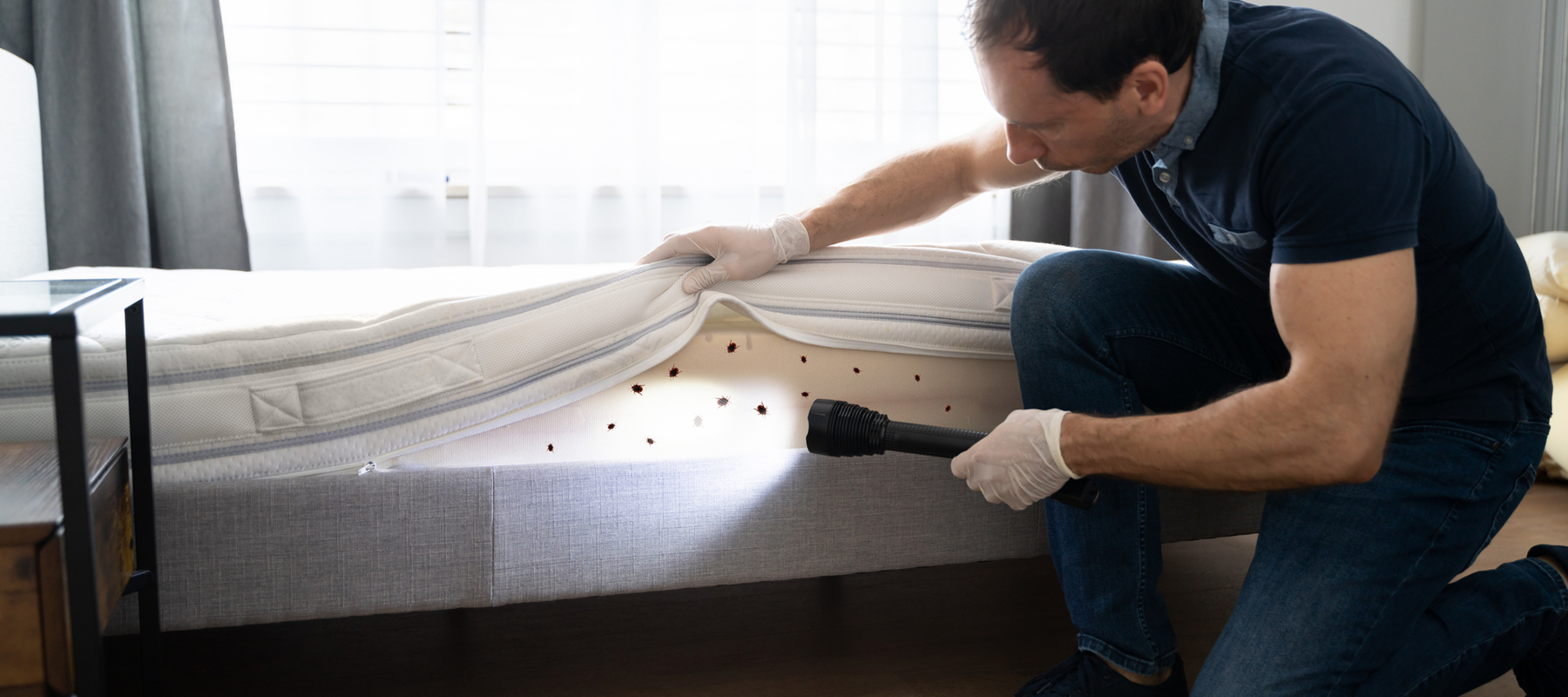How Much Does It Really Cost to Get Rid of Bed Bugs?
Last Updated: October 25, 2023

Fact Checked By: Ryan Maguire
On This Page
Bed bug infestations have been on the rise in the United States for the last couple of decades. Once associated with poor hygiene and poverty, the bugs' resurgence is, according to research, caused by international travel, immigration, changes in pest control practices, and insecticide resistance. Bed bugs live in places where there are ample human and animal hosts such as homes, apartments, hotels, and dormitories. They're difficult to eradicate and exterminator fees often run into the thousands of dollars.
Cost to Get Rid of Bed Bugs #
Here are typical costs to get rid of bed bugs:
For a small infestation in a single room, expect to pay $500-$1,000 for treatment by a professional exterminator.
For a multi-room infestation in an average 2,000 sq ft home, it often costs $1,500-$3,000 to get rid of bed bugs.
Severe infestations across an entire house can cost $4,000-$6,000 or more for professional treatment.
Heat treatments, which heat the entire home to kill bugs, start at around $2,500 and are more for large infestations.
Canine inspections to confirm bed bugs cost $250-$500 on average. This is recommended before and after treatment.
Preparing your home properly before treatment (extensive laundering, decluttering, etc) is crucial and can cost $300-$500 or more.
Follow-up treatments and inspections are typically needed and add to the total cost over months.
So in summary, mild smaller infestations may cost $1,000-$1,500 total, while severe whole-home infestations can cost $4,000-$6,000 or more over several months to fully eliminate bed bugs.
Real-Life Bed Bug Treatment Cost Examples #
Here are some real-life examples of what people paid to get rid of bed bug infestations, with key pricing details bolded:
Mike paid $600 for an initial spraying treatment from an exterminator for a minor bed bug issue in one bedroom of his apartment.
Sara's 2-story home had a moderate infestation across 3 bedrooms and 2 living areas. It cost $2,800 over 4 months for 3 chemical treatments plus canine inspection fees.
Brian had an extensive bed bug infestation that had spread to most rooms in his large 4-bedroom house. He paid $5,500 for a whole-house heat treatment and follow-up chemical treatments over 6 months before they were eliminated.
Ashley discovered bed bugs in one bedroom of her college apartment. The landlord paid $750 for an exterminator to treat just her unit.
Maria's family live in a large 4-bedroom apartment building. Their unit and two adjacent units had to be treated, costing the landlord $4,200 for a bed bug elimination job taking 3 months.
Lucas paid $1,100 to have his 2-bedroom condo heat treated after trying unsuccessful chemical treatments on his own first.
So in summary, costs can range from $600 for a single room up to $5,500 or more for severe whole-home infestations requiring months of treatment.
Exterminating Bed Bugs #
If you're like most people, even the slightest evidence of bed bugs is cause to call an exterminator. Here's what to expect once the local bug guy or gal arrives:
- A visual inspection to determine that there is indeed an infestation. Special bug-sniffing dogs are sometimes used to find bed bug hideouts.
- A combination of treatments, including steam heat, freezing, pesticides, and high-power vacuuming may be used to eliminate bed bugs. Treatments must directly contact bed bugs in order to be effective; bombs and foggers don't work.
- As the homeowner or building owner, you will also have to do some work to control bed bugs. Encasing mattresses (to traps bugs), laundering fabrics (you don't have to throw items away; dryer heat is effective at killing bed bugs), professional fumigation of larger items (typically furniture), cleaning, and decluttering may all need to be done before and after extermination.
- Integrated Pest Management (IPM) is a comprehensive, sensible approach to pest control. Bed bug IPM might involve sealing cracks, crevices, doors, windows, and other bug access points. Discarded furniture, which can harbor and spread bed bugs, should also be avoided, or at least thoroughly laundered. Leaving infested furniture outdoors in extreme cold or heat for a couple of weeks also kills bed bugs.
Identifying Bed Bugs #
While they don't carry disease, bed bugs present an existential nightmare for most. The surest way to identify an infestation is to find a live bed bug. Adult bugs can be spotted with the unaided eye; they're oval, flat, rusty-colored, and about 5 mm long. After feeding they're slightly more elongated (see a pre and post-feeding bed bug picture here).
Short of finding a live bed bug (which is tough to do because they feed at around 4 a.m. and hide during the day), household members or visitors might notice small, pink, itchy skin welts that resemble mosquito bites. Many bite victims don't react at all, although extreme reactions can lead to asthma, hives, and in rare cases, anaphylaxis. Other ways to identify bed bugs are their excrement (tiny dark spots), shed beg bug skin, and blood smears from crushed bugs.
